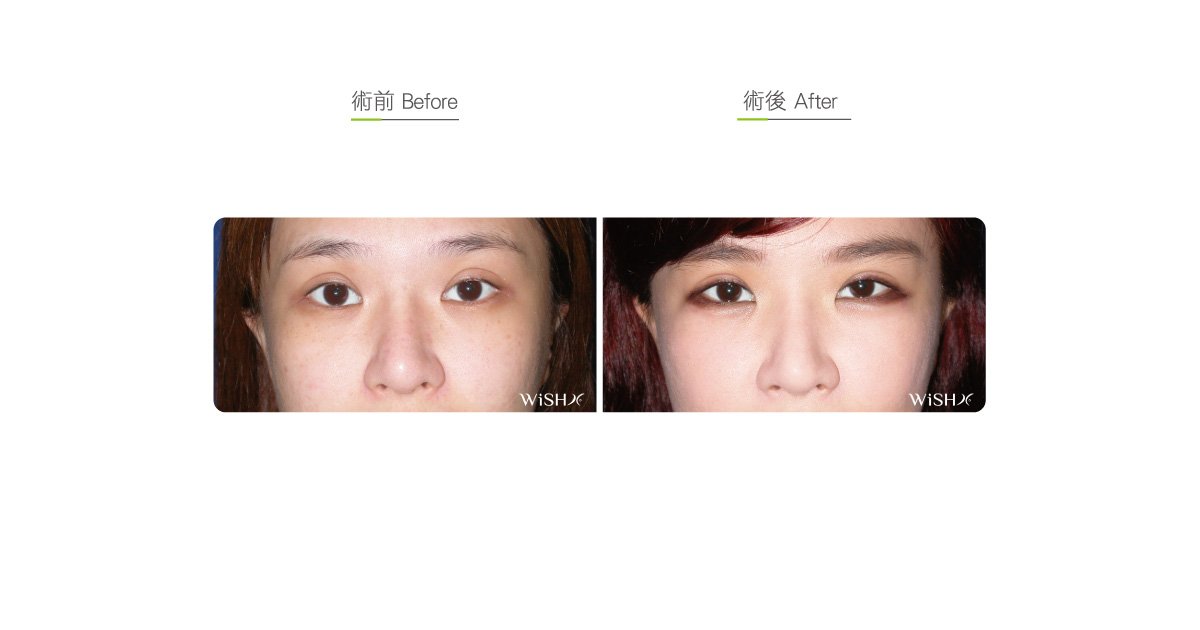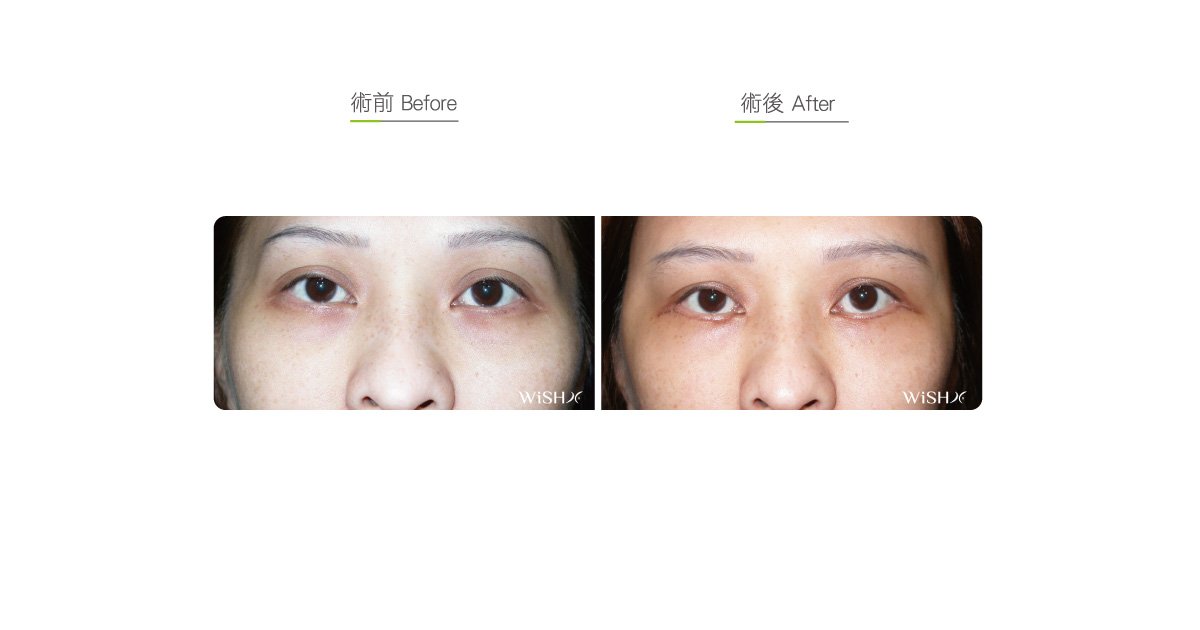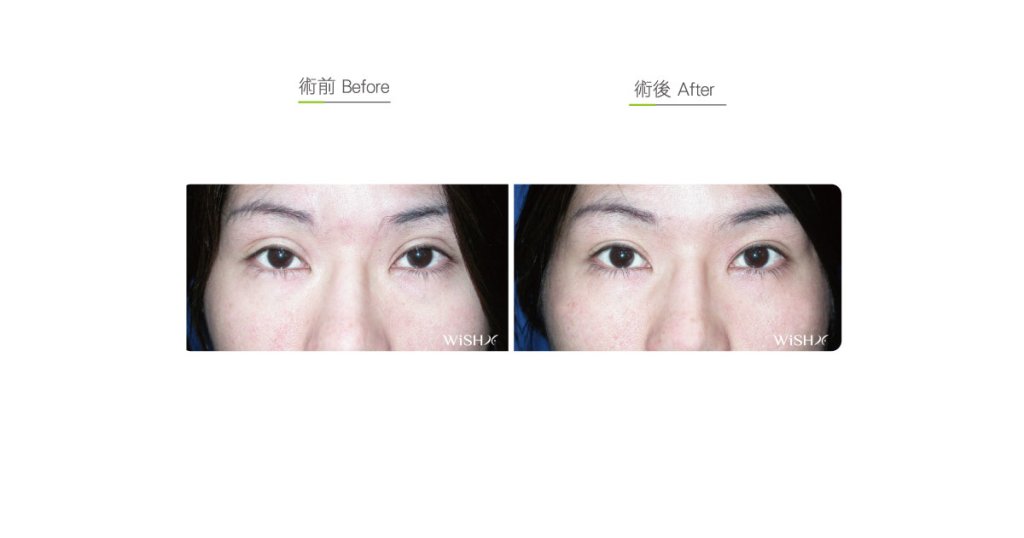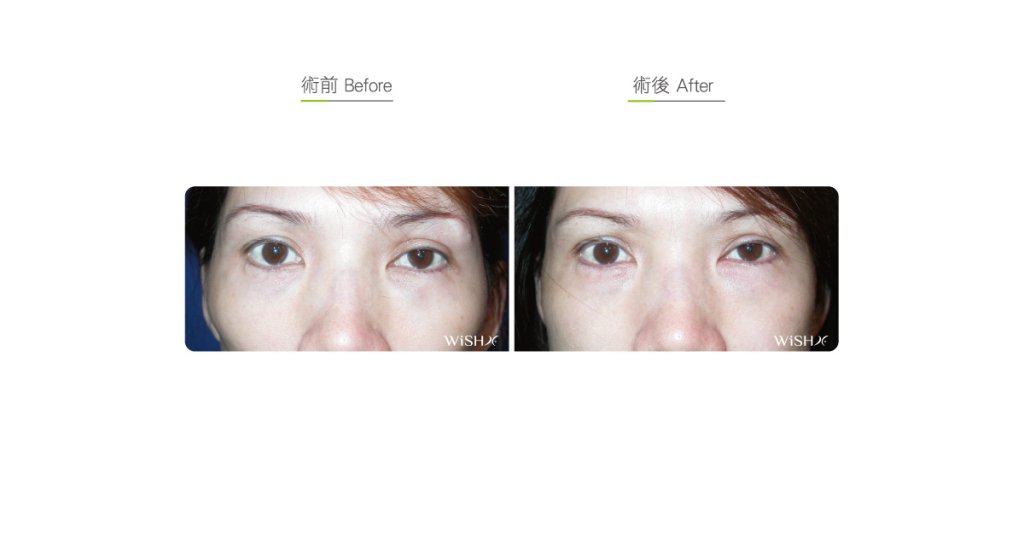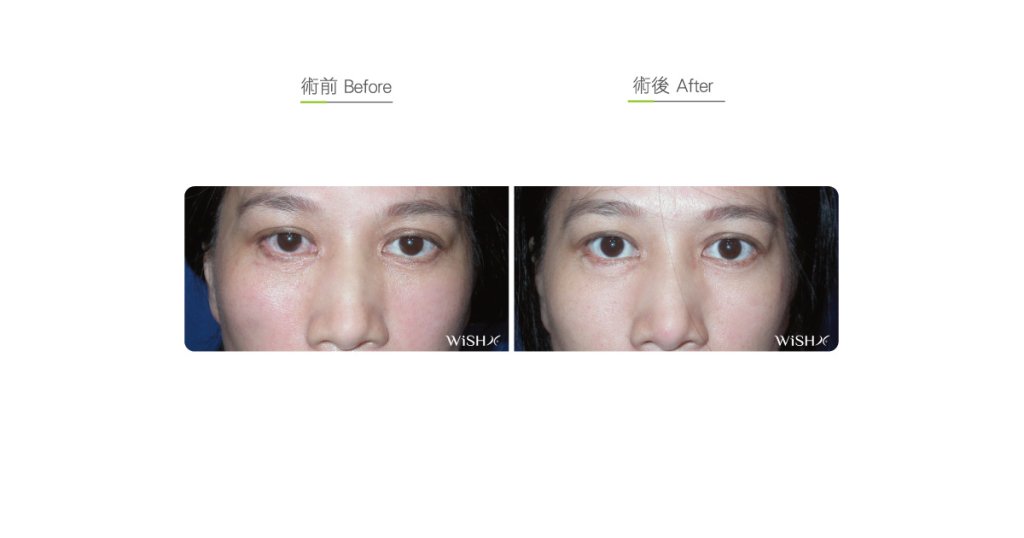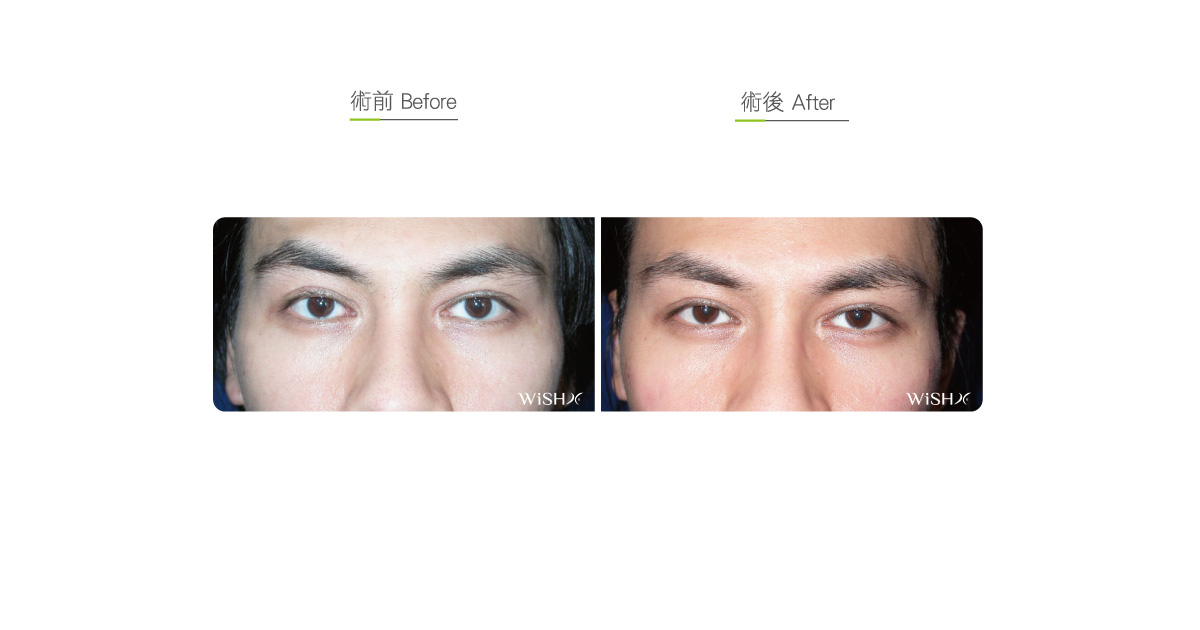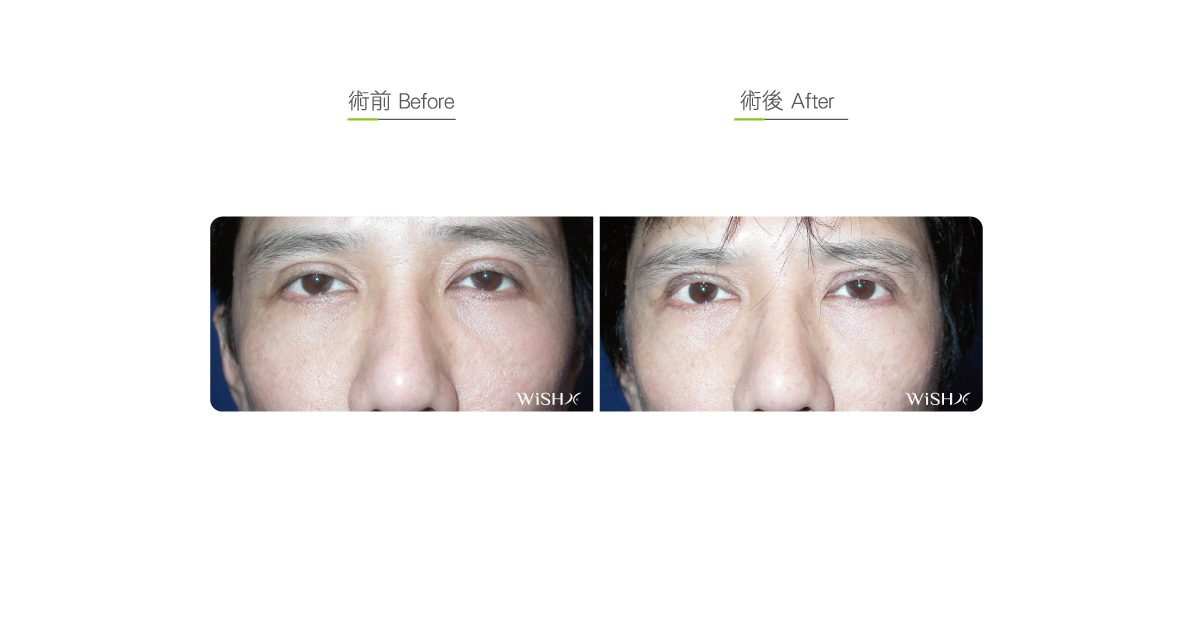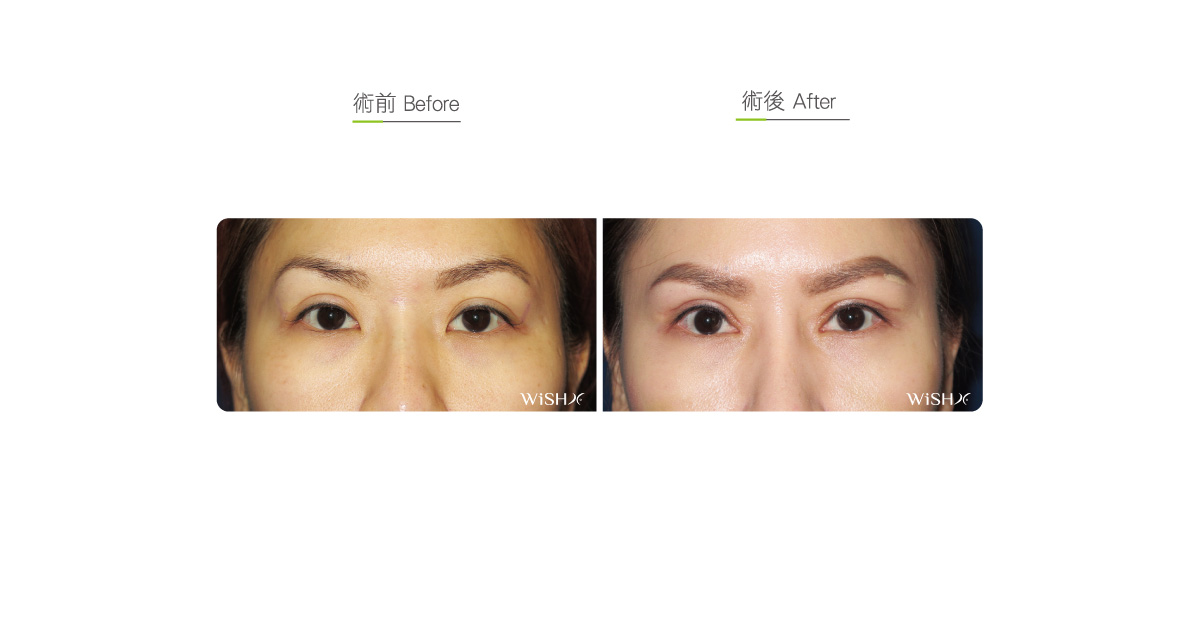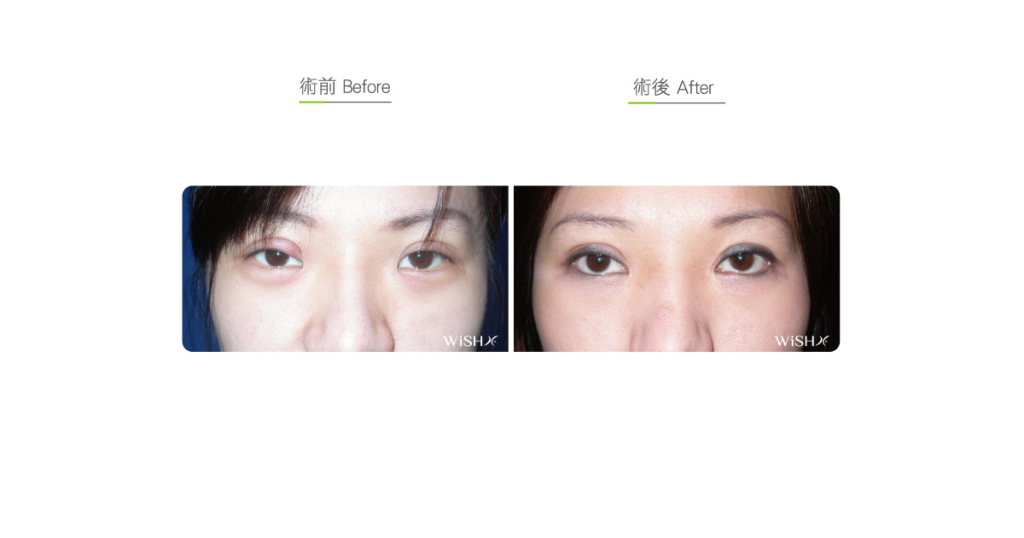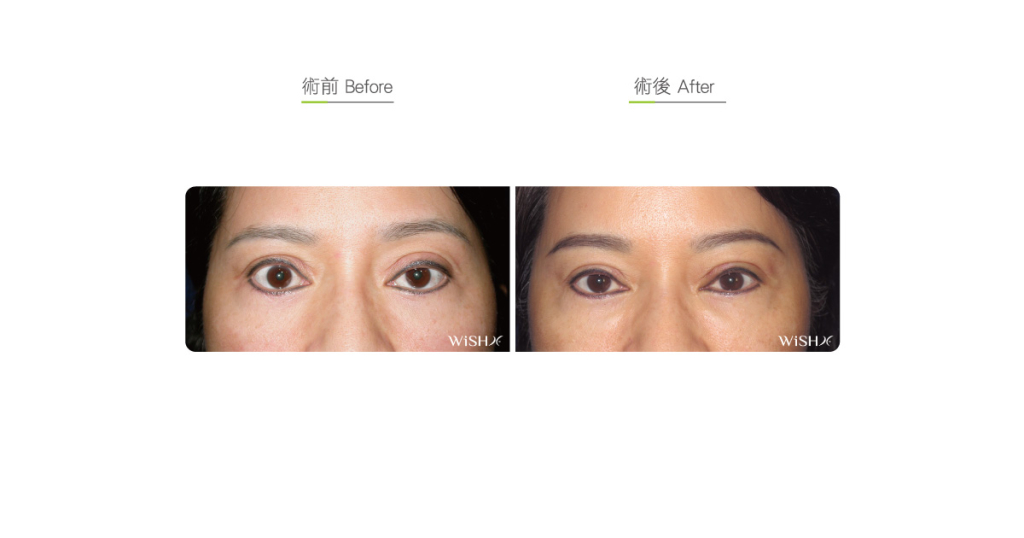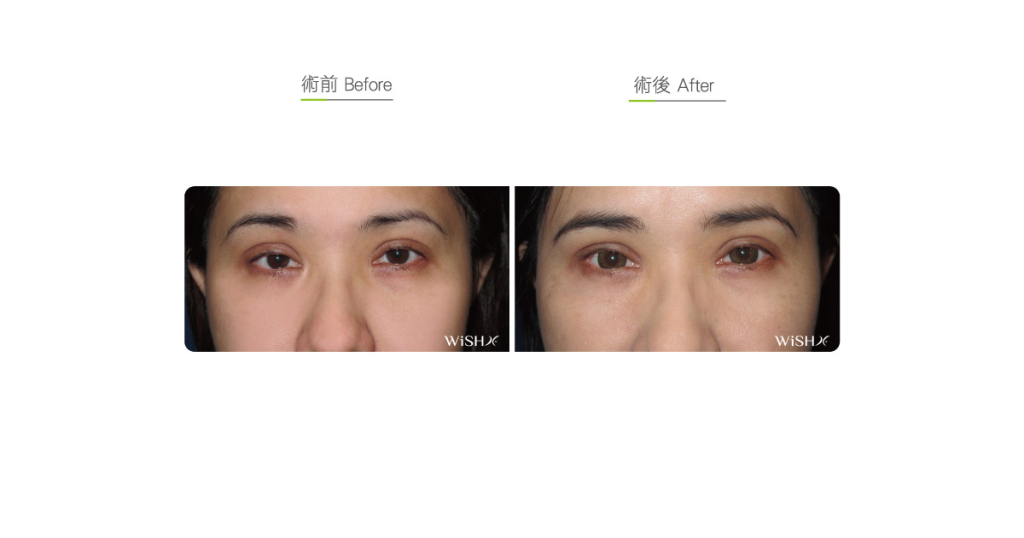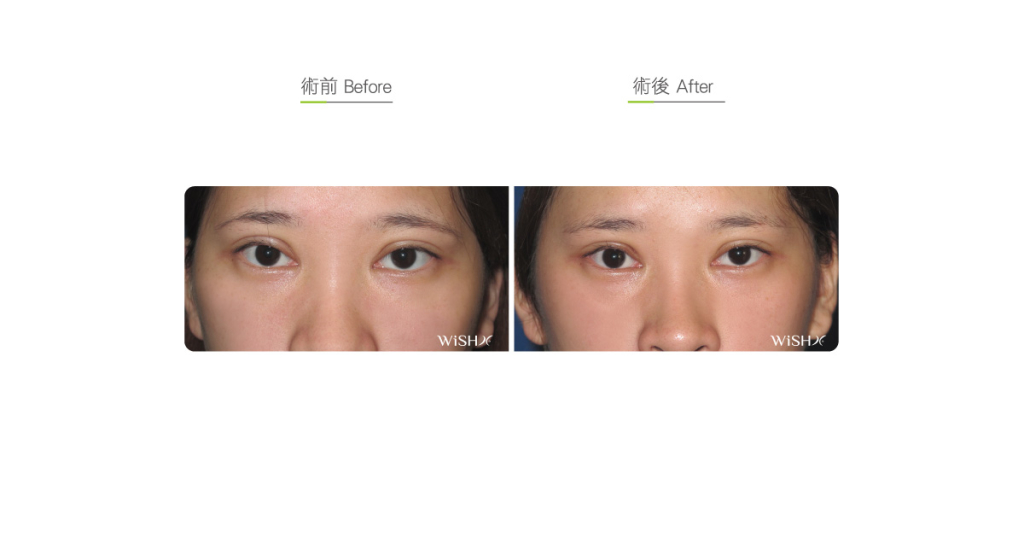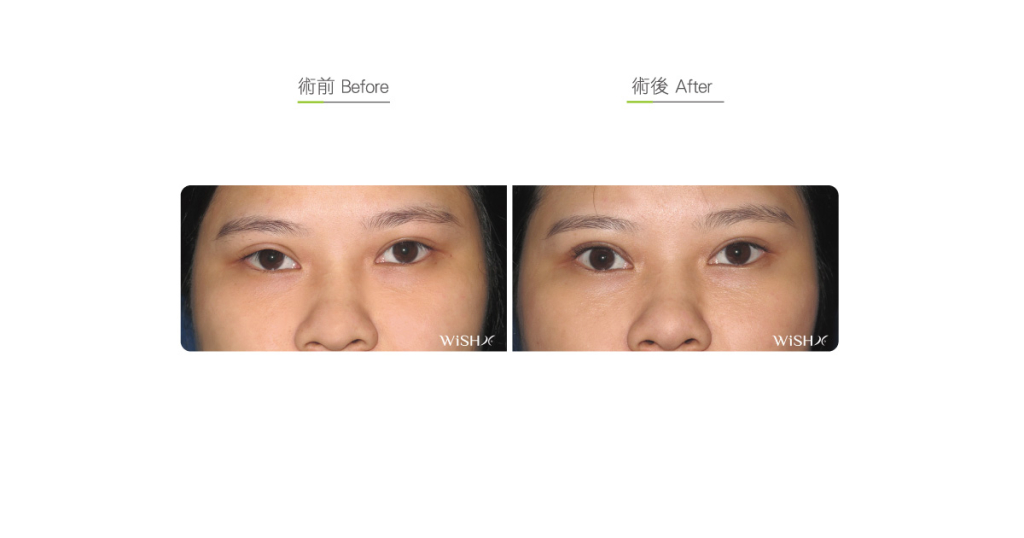Revision Double Eyelid Surgery
The opening and closing of the eyelids are dynamic activities, but double eyelid surgery is always performed under static conditions; therefore, eyelid fold asymmetry or results short of expectation are inevitable after the operation, which, if mild and only noticeable by careful observations (difference of height within 1 mm) under the naked eye, are acceptable and do not need to be treated, but if severe, such as distinct eye fold asymmetry or unequal eyes, necessitate double eyelid revision. Nevertheless, because palpebrae problems are complex and the recovery speeds of both eyes are mostly inconsistent, Dr. Chuang recommends patients to patiently wait for the 6-month observation period. If there is still obvious asymmetry in both eyes, unsmooth eyelid folds, difficulty in raising or closing the eyes, exceedingly high or low eyelids, or even subjective dissatisfaction, the patient can consider undergoing double eyelid revision. Dr. Chuang will be able to objectively study and diagnose prior surgical problems and offer appropriate treatment suggestions.
Considering the subtle structure of the eyelid, double eyelid revision is more complex because it not only needs to identify and correct various problems caused by the prior surgery during the operation but also should meet the higher expectations of patients. Moreover, the risks of scar adhesion induced by repeat or multiple surgeries should be taken into consideration. Therefore, Dr. Chuang recommends patients to carefully consider the necessity of revision surgery and success rate from the following aspects before making decisions:
- Asymmetry of double eyelids
The asymmetry of the double eyelids is frequently the first aspect that patients consider for a successful operation, so physicians should try to deliver results without an obvious difference under the naked eye. Based on clinical experience, a height difference of the bilateral eyelids within 1 mm does not need to be corrected; otherwise, revision surgery is performed to adjust the symmetry of both eyes. In spite of the fact that an intraoperative accurate measurement and operation lowers the incidence of double eyelid asymmetry, there are still some monolid patients unaware of their congenitally unequal eyes due toor underlying levator palpebrae muscle weakness (ptosis), which are is made prominent after double eyelid surgery. Therefore, physicians performing double eyelid revision carefully examine and identify the primary cause of previous failure prior to revision surgery to accurately and effectively correct eyelid asymmetry. - Depth and height of eyelid folds
The patterns of double eyelid folds also determine the patient’s degree of satisfaction. If the results are not acknowledged by the patient, it does not amount to a successful surgery, even if the double eyelids are beautiful. Therefore, the physicians should fully understand the patient’s requirements on the evaluation of revision factors. If the eyelid folds of the previous surgery are too deep or high, a surgery to release or lower the incision lines should be performed; if the patient considered the previous surgical results too natural, the height of the double eyelids will be repositioned, and half-incision surgery or double eyelid stitching surgery will be employed for the revision of the double eyelids. - Smoothness of eyelid folds
Unsmooth or uneven eyelid folds are occasionally seen after incision double eyelid surgery. The primary causes are double eyelid design at variance with the patient’s eye shape, an not unsmooth surgical incision, interference of the suture or scar, or excess laxity of patient’s eyelids. Therefore, the physician should ascertain whether the previous surgical incision is correct and whether the Mongolian fold skin is too tight. Meanwhile, the physician should use the fine suture and stitching technique and may even need to excise the partial scarring and inelastic palpebrae fibrotic tissues before re-stitching to ensure smooth postoperative eyelid folds. - Patterns of double eyelids
AcquiredArtificial double eyelid folds are available in open or closed patterns, which differ in whether the thickness and position of the medial canthus cover the folds at the starting point of the double eyelids. In particular, as Orientals frequently manifest a wide interocular span and thick canthus skin (commonly called Mongolian folds), simple double eyelid surgery mostly creates an eye shape like the almond eye, which does not substantially change the eye size but makes the patients have a bitslightly slanted eyelid shapes. To improve the satisfaction degree of revision surgery, Dr. Chuang explains the difference between the closed and open patterns of double eyelids and the acquired conditions during the preoperative evaluation. Patients should consider concurrent medial canthoplasty if necessary to achieve the optimal effects of an open (also called parallel lines) pattern double eyelid and real eye enlargement. - Function of the levator palpebrae muscle
The levator palpebrae muscle mainly functions to raise the palpebrae horizontal line and curtail the area of the black eyeballs covered by the eyelid (eyelash), which, in other words, decide the size of the eyeball exposure. Therefore, patients with congenital levator palpebrae weakness or ptosis mostly have a drowsy look, multilayer folds, or exceedingly low or even inverted eyelashes. If such problems are not diagnosed prior to double eyelid surgery or are not recognized by patients due to single fold eyelid coverage, it is highly likely to cause postoperative asymmetry or unequal eyes. Moreover, potential levatorocular muscle weakness results in postoperative chronic palpebral pre-tarsal edema (blepharedemablepharoedema) or unexpected iatrogenic ptosis, which is incorporated into evaluation references prior to revision surgery. If necessary, levator palpebrae muscle correction is recommended to be simultaneously performed at the same time.
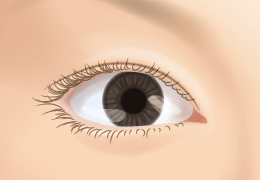
Closed double eyelids
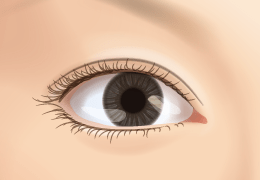
Open double eyelids
Surgical conditions
Duration
- Type of anesthesia: IV sedation + local anesthesia
- Surgical incision: An incision from the medial canthus to the lateral canthus at the upper eyelid or a previous surgical incision
- Recovery: Over 3 months on average
- Removal of stitches: 7–10 days
General instructions
No food and water on the day of surgery
- Avoid smoking, alcohol, and irritating foods for 1 month postoperatively.
- Apply a warm pack for 3 months postoperatively for the eyelid swelling to subside.
Ideal candidates
- Patients with double eyelid asymmetry at a height difference of over 1 mm
- Those with exceedingly deep, high, or unnatural double eyelid folds
- Those with unsmooth double eyelid folds or irregular skin wrinkles
- Those whose eye shape or eyelid patternproportion does not meet their subjective requirements
- Those with prolonged eyelid edema that does not subside
- Those with unexpected eyelid opening and closing dysfunctions
- Those with idiopathic double eyelid asymmetry
Potential complications
- Eyelid fold aasymmetry
- Exceedingly deep eyelid folds
- Scar adhesion or hypertrophyplasia
- Eyelid pre-tarsal chronic edema
Surgical advantages
-
It is able to correct the defects of the previous prior surgery and enhance patient self-confidence.
-
It is able to meet the patient’s subjective requirements and satisfaction ratedegree.
-
It is able to correct underlying functional problems (such as levator palpebrae muscle weakness or ptosis).
-
It is able to increase the durability of the double eyelids.
-
It is able to correct partial eyelash inversion problems.
Surgical drawbacks
-
Revision surgery is relatively complex and time consuming.
-
The pPostoperative recovery or the time the swelling takes to subside is long.
-
There still exist uUncertain risks that may affect the surgical results (such as scar adhesion) still exist.
-
Confined by the previous surgical conditions, it may be unable to completely solve correct the irreversible problems (such as the over- resection of eyelid skin).
-
Revision surgery may make the scar more obvious.

